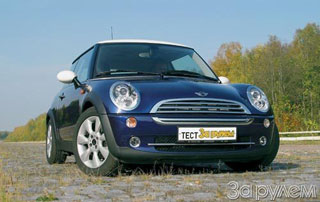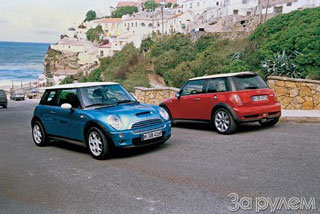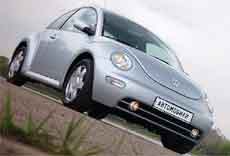Mini Cooper 2001 test drive - 2006 hatchback
Petersburg express
 Three years ago, when I first had a chance to travel to the Mini Cooper S of the previous generation with a compressor engine, the machine struck me. As in such a small body, an extremely sports and at the same time suitable car for daily trips can be hidden at the same time, albeit without much comfort: the salon is completely deprived of sound insulation, and the angles of the wheels are such that the car is simply not able to go directly to the constantly chicling. But sensations behind the wheel cannot be compared with any road machine: dynamics, handling, brakes everything is built to an excellent degree!
Three years ago, when I first had a chance to travel to the Mini Cooper S of the previous generation with a compressor engine, the machine struck me. As in such a small body, an extremely sports and at the same time suitable car for daily trips can be hidden at the same time, albeit without much comfort: the salon is completely deprived of sound insulation, and the angles of the wheels are such that the car is simply not able to go directly to the constantly chicling. But sensations behind the wheel cannot be compared with any road machine: dynamics, handling, brakes everything is built to an excellent degree! So, the past Mini impressed with its combination of relative comfort and sports, albeit with the obvious predominance of the latter. We decided to set the new car an even more interesting and complex task than a simple city riding we went to the Mini Cooper S on a long journey, and to be more precise in St. Petersburg.
Most colleagues turned their finger at the temple, they say, Mini is exclusively a city car and is completely not intended for long trips. But in the post -war years, the British used the first mini as the only family car and went on it on a trip. What are we worse?
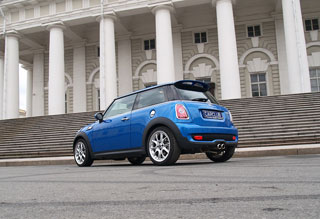 In a word, spitting on all warnings regarding the quality of our roads and their compatibility with 18-inch low-profile wheels and a sporting suspension of Eska, I went to the city on the Neva. The benefit of the Russified Mini navigation system found this city and indicated to me the route. So, the full tank of the 95th, the rampant leather gloves to squeeze a small sports steering wheel tightly, and go. At the same time, on the exit from Moscow I am a reset of an on -board computer. It is interesting how Mini Cooper S will behave on a long journey.
In a word, spitting on all warnings regarding the quality of our roads and their compatibility with 18-inch low-profile wheels and a sporting suspension of Eska, I went to the city on the Neva. The benefit of the Russified Mini navigation system found this city and indicated to me the route. So, the full tank of the 95th, the rampant leather gloves to squeeze a small sports steering wheel tightly, and go. At the same time, on the exit from Moscow I am a reset of an on -board computer. It is interesting how Mini Cooper S will behave on a long journey. Of course, thanks to the sports suspension and 18-inch hard tires Run-on-Flat, the driver and his hands are regularly informed about all the defects of the roadway. But running ahead, we can say that along the way the suspension did not allow a single breakdown, although on the treshka BMW, on which I went to St. Petersburg last year, hard strokes were the norm. Surprisingly, Cooper is not particularly acute to the rut, and the powerful front -wheel drive car does not tear the steering wheel out of the hands at the acceleration. In the Mini movement, it is perceived as an absolutely hard car, but not in terms of suspension, but in part of the body. Cooper S without delay reacts to any actions of the driver, whether it is the steering wheel or gas pressing. The machine is elastic, like a ball, jumps through any bumps, but for a second does not lose contact with the road.
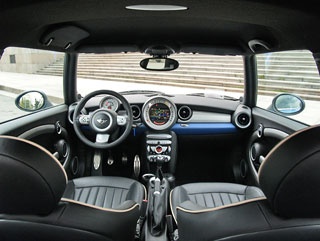 After the first hundred kilometers, the doubt of the correct choice of a car for a long road was finally settled. When you are driving the Eska, the feeling of a small machine gradually disappears. She perfectly holds a given trajectory, whether it is a straight or arc, and the reactions follow immediately, as if Cooper S does not have a mass, which gives rise to a resemblance to extremely facilitated racing machines.
After the first hundred kilometers, the doubt of the correct choice of a car for a long road was finally settled. When you are driving the Eska, the feeling of a small machine gradually disappears. She perfectly holds a given trajectory, whether it is a straight or arc, and the reactions follow immediately, as if Cooper S does not have a mass, which gives rise to a resemblance to extremely facilitated racing machines. Hard tires are regularly transferred to the salon of a monotonous hum, it is heard at 80 km/h, but in the future it does not increase, at least up to 160 km/h can be talked on the phone, practically without raising your voice.
The new 1.6-liter turbo engine, which BMW engineers built in cooperation with the French from the PSA Peugeot-Citroen group at first raised doubts. If the previous compressor engine had absolutely even traction in the entire speed range, then the turbochargers are characterized by delay. But predicting the fears of potential buyers, the developers created a very elastic engine. The steam traction begins after 1,500 rpm, and in the region of 3000 a significant pickup occurs, which remains up to the red zone. There is enough traction in excess and therefore I do not want to twist the motor to the limit. More pleasure gives to switch in the range from 4,000 to 5000 rpm and always stay in the turbine zone. The benefit of the transfer is selected closely and there are six of them. Although the need for such an amount for me remained a mystery. For all the time of the test, I never once turned on the fifth gear in it there is no need. Usually there is enough overclocking on the third for 5500 rpm, which corresponds to 120 km/h, and you can safely switch to the sixth on the tachometer exactly 3000. Sometimes you use the fourth, but the fifth is not needed at all. Rather, a 6-speed box is a tribute to fashion and marketing, because almost all charged models have six programs, so the engineers are forced to invent new gears, even if no one needs them. Perhaps multi -stage boxes can help forced turbodiesels, which have a narrow working range, but when the thrust, as on Cooper S, is present almost throughout the length of the tachometer, the excess transmission is rather irritated. It is more often than usual to turn to a gearbox or jump extra steps.
 But the high lever lies perfectly in the hand, and the programs themselves, although they require significant efforts, are almost impossible to make a mistake with excellent accuracy, except to stick the fourth instead of the sixth, but this is by and large, anyway.
But the high lever lies perfectly in the hand, and the programs themselves, although they require significant efforts, are almost impossible to make a mistake with excellent accuracy, except to stick the fourth instead of the sixth, but this is by and large, anyway. The standard movement mode along the highway turned out to be very tense: the speed quickly rises to 160-180 km/h, and sometimes exceeds 200. Moreover, for very dynamic acceleration, the last 6th gear is quite enough. Sometimes, without switching, it was possible to drive more than a hundred kilometers. Great engine. But even more Cooper S impressed fuel consumption. Subject to very active movement, when the average speed exceeded 110 km/h, the on -board computer showed the result of 8.3 liters per hundred.
At first, the Mini instrument panel is somewhat puzzling. The tachometer is in front of the eyes, and the speedometer is taken to the center of the front panel, and even its dimensions surpass all reasonable limits. And given that the center of the scale is busy with the display of the navigation system, the speedometer arrow walks around the circumference of the scale and it can be seen poorly, and in the dark, you can only guess or bring its digital value to the tachometer display. Also, the mini speed can be accurately determined by the tachometer on the last gear for each thousand revolutions accounts for 40 km/h.
 The rest of the interior, as before, leaves a very optimistic impression, is a real kingdom of circles and ovals. It seems that give the designers the will, they would have made the windshield round, just as they made all the mirrors oval, including those in solar visors, pedal overlays and inserts on the doors. There are simply no straight angles in the mini salon. Perhaps the supporters of classic cars will seem to be blasphemy, but the Mini design, both external and internal, is very impressive. Approaching the car, I always want to smile, and in the cabin to be a sad mine for a long time: Cooper S will definitely make you smile either from your unique style, or from dynamics.
The rest of the interior, as before, leaves a very optimistic impression, is a real kingdom of circles and ovals. It seems that give the designers the will, they would have made the windshield round, just as they made all the mirrors oval, including those in solar visors, pedal overlays and inserts on the doors. There are simply no straight angles in the mini salon. Perhaps the supporters of classic cars will seem to be blasphemy, but the Mini design, both external and internal, is very impressive. Approaching the car, I always want to smile, and in the cabin to be a sad mine for a long time: Cooper S will definitely make you smile either from your unique style, or from dynamics. Perhaps, according to the test results, I managed to find only one drawback of Mini is its price. The tested ESC with the navigation system and other options is estimated at 33,900 euros (more than 45,000 dollars). With all due respect and love for Mini Coopes S, I could not give such a lot of money for such a small car. Unless as a second car, when the price does not matter, but then it is worth preferring the open version of the Cooper S Cabrio to achieve complete demolition of the head. For a similar price, I would prefer Alfa Romeo 159 2.2. It, of course, is inferior to Mini in dynamics, but the difference is not so great and in the sensations of controllability these cars are close, but alpha salon is still more adapted to life.
Text and photo: Leonid Pavlov
+
Motor
Controllability
Design
-
Price
In fact, a 2-seater salon
The price of the tested car -? 33 900
Complete the test of the tested car
Frontary airbags
Side airbags
Inflatable curtains
Abs
Anti -boom system
The system of dynamic stabilization
Steering amplifier
Multifunctional steering wheel
Adjustable steering column in height
Adjustable steering column by departure
Steering wheel decoration with leather
Salon decoration with leather
Lobic glass electric heating
Electric heating of the front seats
Rear -view mirror
Remote Central Castle
Air conditioner
Climate control mono
Electric drive and heating of external mirrors
Electr -glass lifts are front
Back seat
CD-audio system
Light sensor
Rain sensor
Trip computer
Parctronics
Fog lights
headlight washer
Alloy wheels
Cruise control
Navigation system
Xenon headlights
Specifications
Body
Body type 3-door hatchbk
The number of places 4
Trunk volume, l 160/680
Equipped mass, kg 1205
Full mass, kg 1580
Length, mm 3714
Width, mm 1683
Height, mm 1407
Wheel base, mm 2467
Road clearance, mm 130
Engine
Type of gasoline, with turbocharged and distributed fuel injection
Front location, transversely
Location and number of cylinders R4
Working volume, cm 1598
Cylinder diameter/piston stroke, mm 77/85.8
Compression degree 8.1
The number of valves per cylinder 4
Maximum power, L.S./rpm 175/5500
Maximum torque, Nm/rpm 240/1600-5000
Transmission
Gearbox 6-speed, mechanical
Front drive
McPherson front suspension
The rear suspension is independent, spring, multi -link
Front brakes Disco ventilated
The rear brakes are disk
Tires 205/45 R17
Dynamics
Maximum speed, km/h 225
Acceleration time 0-100 km/h, with 7.1
Fuel consumption, l/100 km
city cycle 5.7
country cycle 8.9
mixed cycle 6.9
Fuel tank capacity, l 40
Fuel AI-95 gasoline
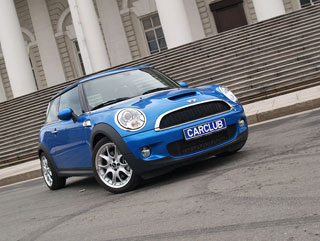
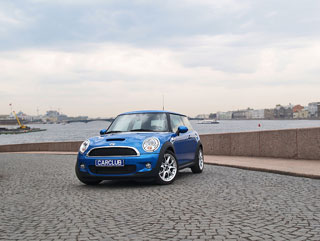

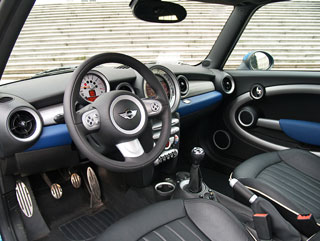

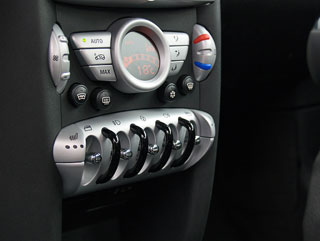
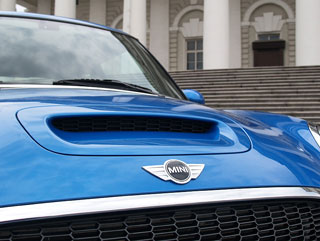

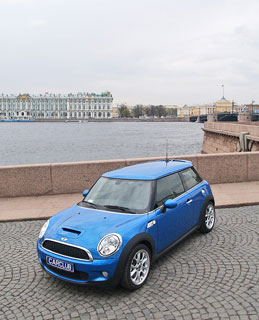






Source: Carclub.ru
Video crash tests Mini Cooper 2001 - 2006
Mini Cooper 2001 test drives - 2006
Mini Cooper Krash Test 2001 - 2006
Krassh Test: Detailed Information25%
Driver and passengers
8%
Pedestrians








